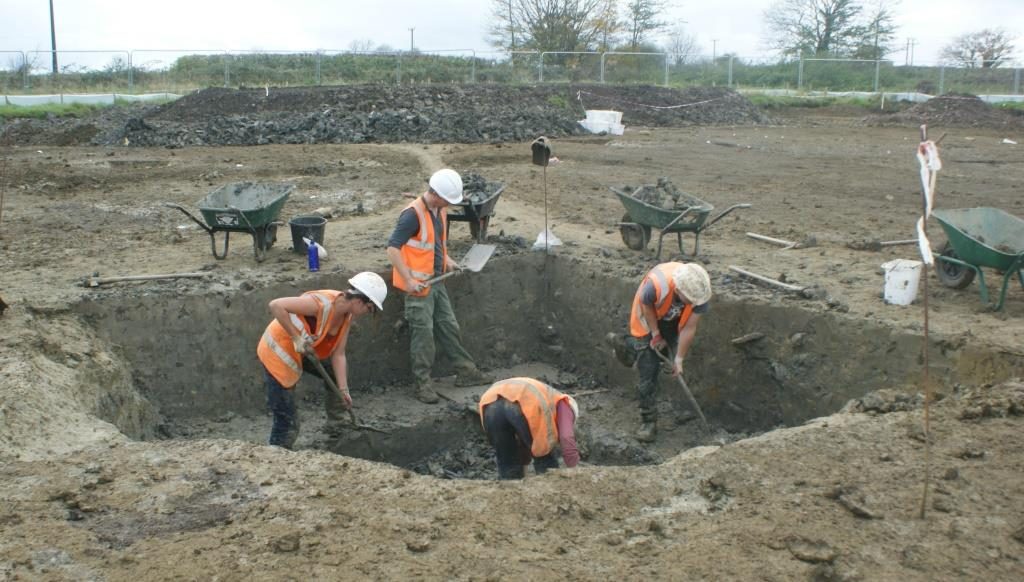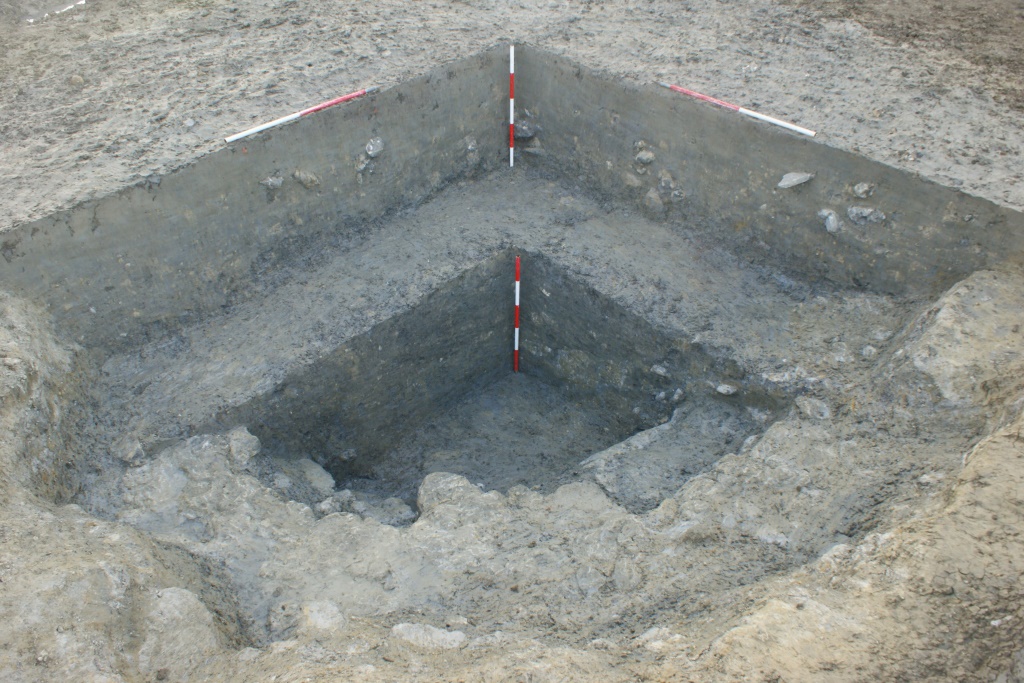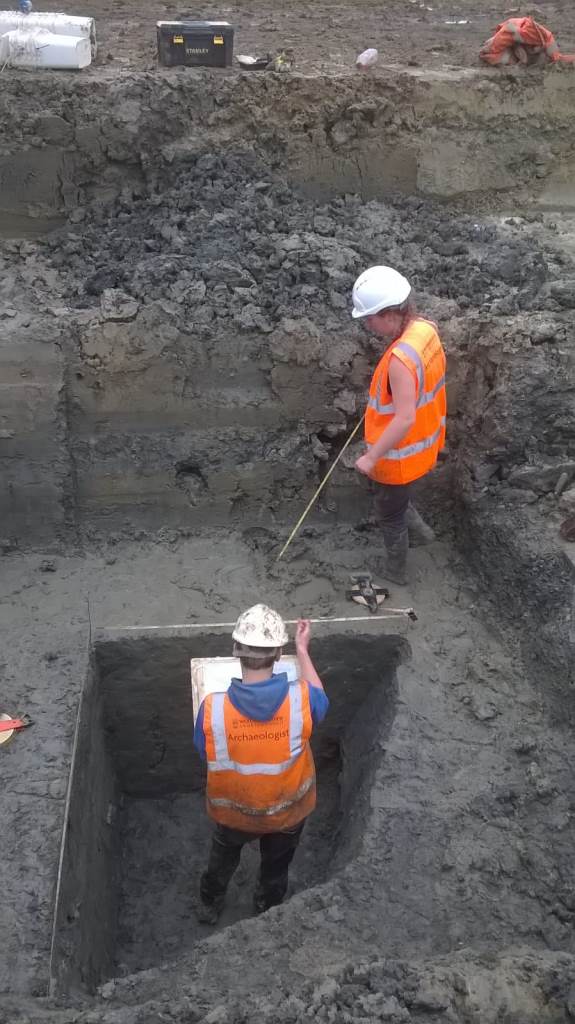Find of the Month – November
- 29th November 2017
What counts as a ‘find’? To archaeologists, this term usually means artefacts we’ve uncovered. But what about archaeological features (pits, ditches and so on) – are they finds too? Both features and artefacts are things found by archaeologists, so in that sense yes they are.
November’s find of the month is a Roman well, found on an Iron Age to Romano-British settlement site in Gloucestershire. Turning on a tap today, it is easy to forget how precious and difficult to source clean water can be. Imagine, as those here nearly 2000 years ago had to, digging a well through heavy, waterlogged clay then bedrock by hand, so heavy buckets could be laboriously winched up each time you needed clean water.
On the surface, this 7m wide circular feature resembled a pond. As is common practice with large round features, Tim and the team divided the area into quarters and excavated one quadrant. This allows us to see the profile (shape) of a feature and decide if more needs digging.

Worcestershire Archaeology team starting to excavate the well
Excavation revealed a shallow slope with steps cut into the edge. Towards the middle, the sides suddenly dropped away to become a vertical shaft. Your typical pond is not 4m deep with straight sides, so out went that theory. The feature is definitely a well and appears to have been unlined with wood or stone, as ever timber should have survived or left a trace in these waterlogged conditions. For ease of use or construction, a wide, shallow slope was dug around the top of the well, which is itself larger than average at around 2.5m wide, hence the original pond-like appearance.

Quadrant of Roman well after 2m, showing bottom access steps in lower left-hand corner of photo (1m scales)
Exactly how deep the well went remains unknown. For safety reasons, the excavation area had to be stepped in after a certain depth, to reduce the risk of collapse. Around 2m down the ground became waterlogged, which are excellent conditions for preserving the organic materials normally lost to decay. Valuable environmental evidence about the landscape, wooden and leather items are often found at the bottom of wells. However, after 3m we could dig no further. Using a thin metal tube, known as an auger, to extract a sample of buried deposits, we know that the well continues for at least another meter.

Elspeth and Morgan recording the well
Once out of use the well gradually silted up and several sherds of Roman pottery, currently awaiting identification, found their way into the upper fills. Roman wells are sometimes found with deliberate closing deposits – whole pots, coins, animal and even human burials in some cases. It’s also been noticed at Roman villas occasionally have two different wells, one with deliberate closure deposits and another without. Was one well functional and the other associated with rituals? It is a tempting interpretation, but potentially too simplistic. Not all rituals or religious acts leave behind physical evidence (praying, for example) and religious structures can have functional uses too. With a sword found nearby, we need to think carefully about what the evidence tells us.
Our November find of the month raises interesting questions as well as answering some (or at least, we hope it will when the environmental samples are analysed). Without doubt though, shifting so much clay by hand was worth it.
Nina O’Hare
Post a Comment